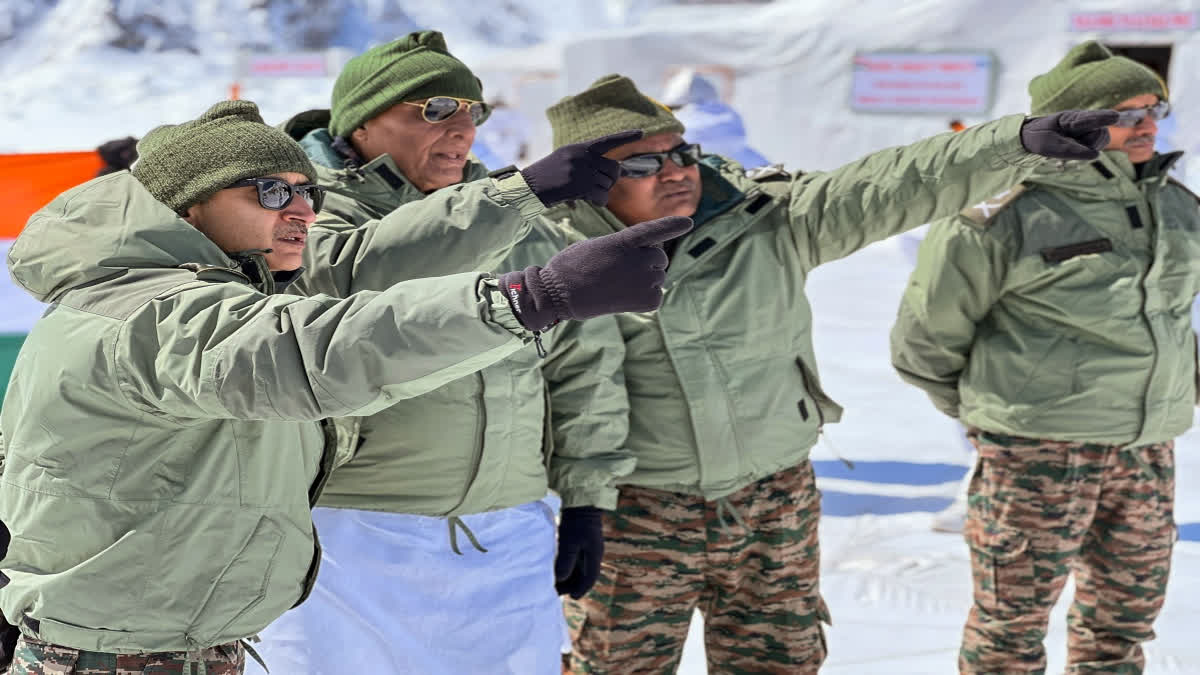India's defence budget allocation has gradually increased in the course of four years: ₹4.71 lakh crore (2020), ₹4.78 lakh crore (2021), ₹ 5.25 lakh crore (2022) and ₹5.94 lakh crore (2023). The interim budget for 2024-25 on February 1 allocated ₹6, 21,540.85 crore to the defence sector for 2024-25, a meek hike from last year’s allocation, 4.7 per cent higher than the allocation for 2023-24.
Key Allocations in Defence Budget
The key allocations include capital acquisition (₹72 lakh crore); budget for armed forces for revenue expenditure other than salary (₹92,088 crore); pensions (₹1.41 lakh crore); border infrastructure (₹6,500 crore); Indian Coast Guard (₹7,651.80 crore); and DRDO (₹ 23,855 crore).
As the union budget is expected to be an extension of the interim budget, instead of these allocations, there are higher expectations that the defence budget is likely to get an enhancement of 7 to 9% in the upcoming budget going to be presented on Tuesday. Defence specialists and industry has been waiting on allocation for 'Make in India', defence production and exports, modernisation, research and development (R&D) and more eagerly on the Agnipath scheme amid its criticism.
Expectations of Indian Armed Forces:
Indian armed forces look forward for at least 25% of the government’s total expenditure for defence in the budget to be announced on Tuesday because it is indispensable to enhance defence capabilities and readiness along the border areas with China and Pakistan. Despite the fact that Pakistan has not been a major worry, deployment of a large number of troops on the border with Pakistan is standard spending. On the contrary, the apprehensions with China certainly need extensive investments in infrastructure and emergency purchases of new equipment.
To compete with China’s infrastructure, a special grant for the Border Roads Organisation is expected for the construction of roads, bridges and tunnels close to borders and also to incorporate a separate provision for purchasing arms and ammunition is anticipated in the approaching budget. In the Interim budget (2024-25), the allotted $75 billion is not adequate to counter China, whereas China’s defence budget for 2024 will be around $231.4 billion. Even though the Indian economy has limitations compared to China, India is obliged to fill the inadequate allocation by an impressive rise in defence spending.
Role of 'Make in India'
The 'Athmanirbharata' ('Make in India') plan has been playing a key role in growing the share of the defence capital procurement budget apportioned for domestic procurement. According to Pushan Sharma of CRISIL, this has mounted from 68% in 2022-23 to 75% in 2025, with 25% reserved for the private sector.
In 2024, India's defence production reached ₹1,26,887 crore, with private sector companies contributing ₹26,506 crore, which is 21% of the total production. The goal is to reach ₹3, 00,000 crore by 2028-29. Over the last three financial years, the Ministry of Defence (MoD) signed 122 contracts to complete the defence projects. Notably, 100 of these contracts, accounting for 87% of the total contract value, were signed with Indian merchants. In this context, beyond the annual budget, in a momentous march towards achieving self-reliance in defence, on July 16 MoD notified the fifth 'Positive Indigenisation List' comprising 346 strategically important items, endeavours to curtail imports and boost domestic production for Defence Public Sector Undertakings.
India's defence production in 2023-24 was ₹ 74,739 crore, compared to ₹ 1.09 trillion in 2022-2023. Defence exports had touched a record ₹ 21,083 crore in 2023-24. In February, Defence Minister Rajnath Singh had said that India’s annual defence production was expected to touch ₹ 3 trillion by 2028-29, while exports of military hardware could reach ₹ 50,000 crore.
Private companies accounted for a larger share of defence production in 2023-24 which was more than witnessed in the preceding eight years. On this basis, ahead of the current budget, the industry has been waiting for any hopeful measures that may be taken in the forthcoming budget because India's defence capital acquisition budget needs to grow 25% annually over the next five years, starting with the budget for 2024-25, to achieve the ambitious annual defence production target of ₹ 3 trillion by 2028-29.
